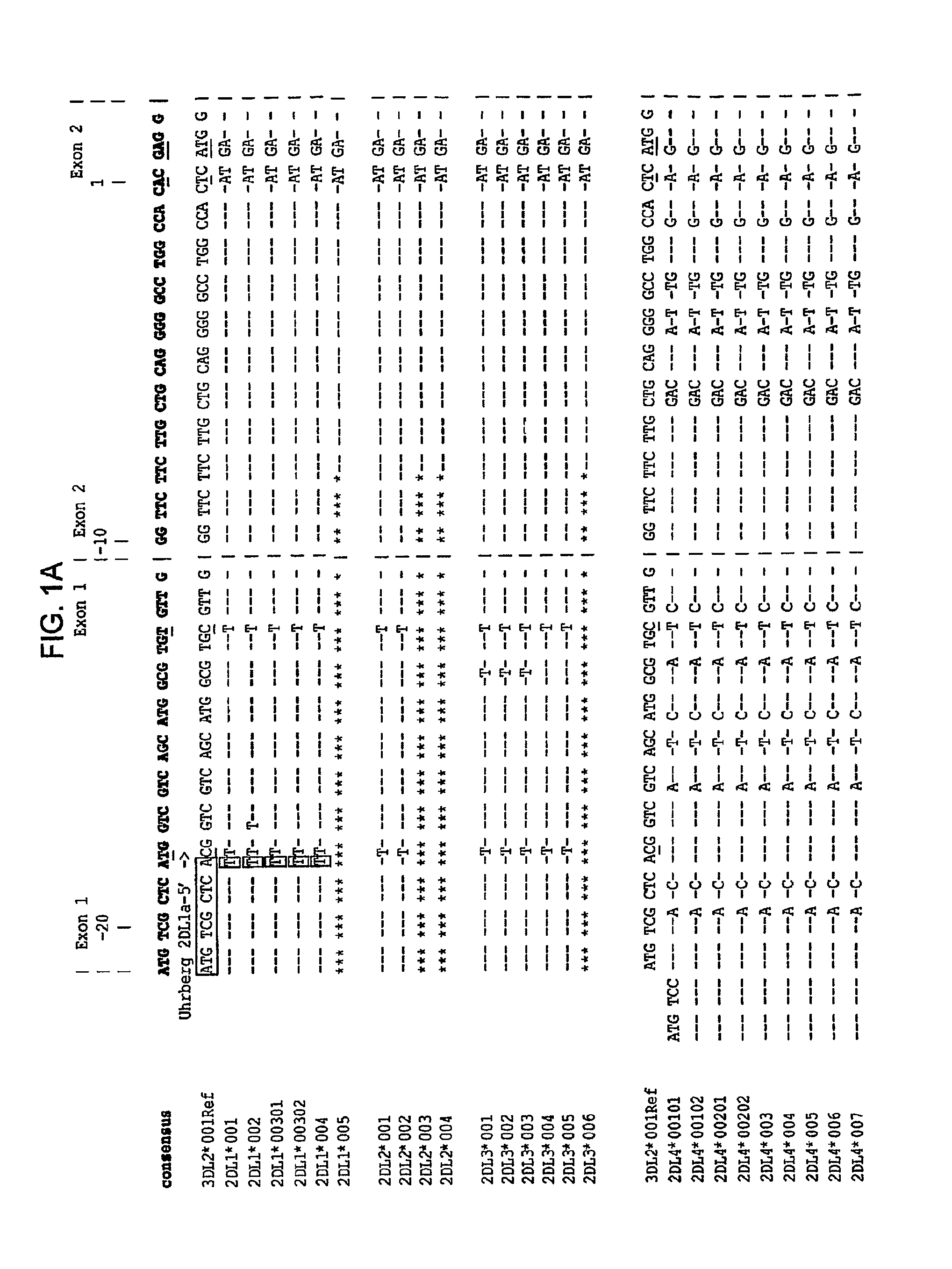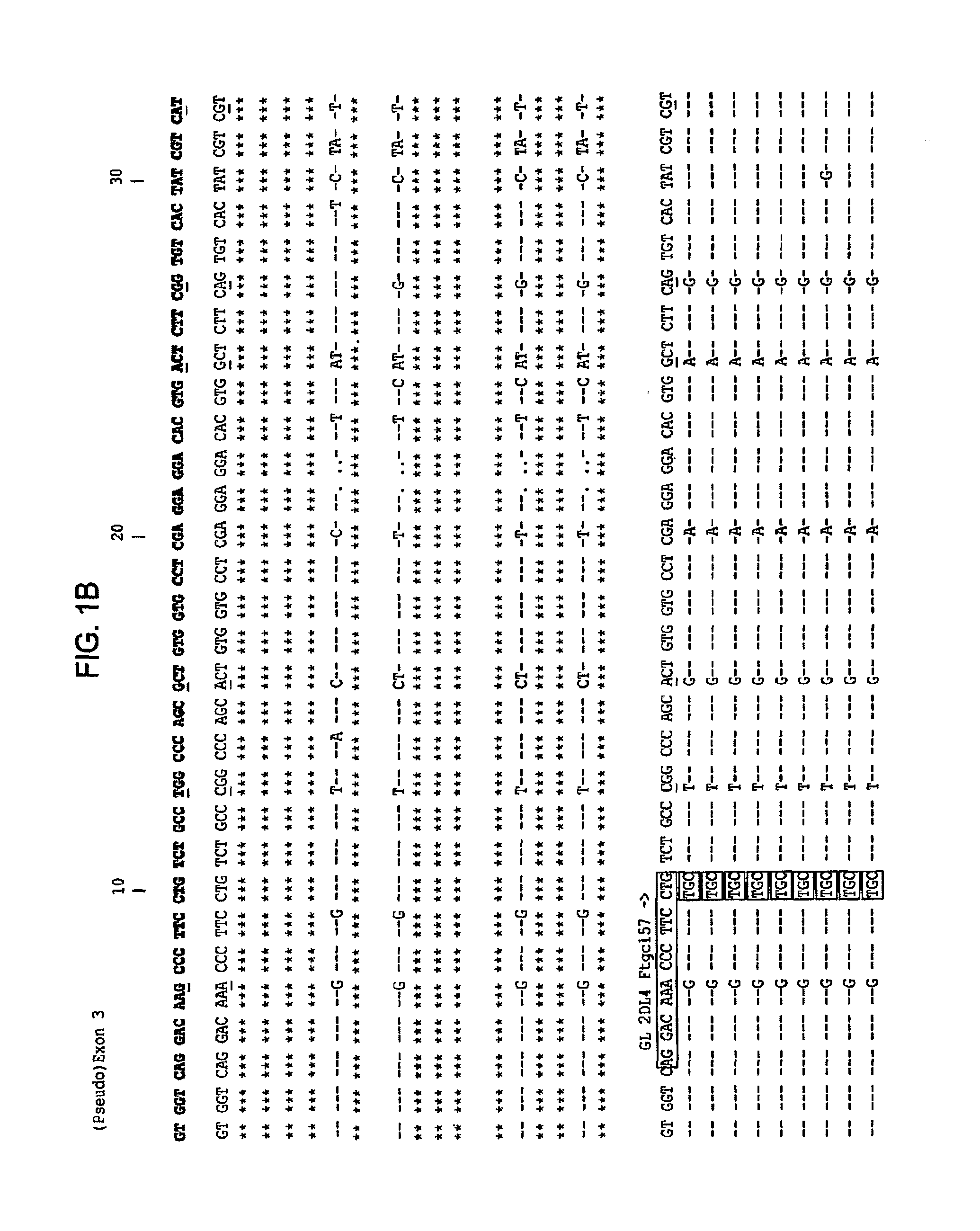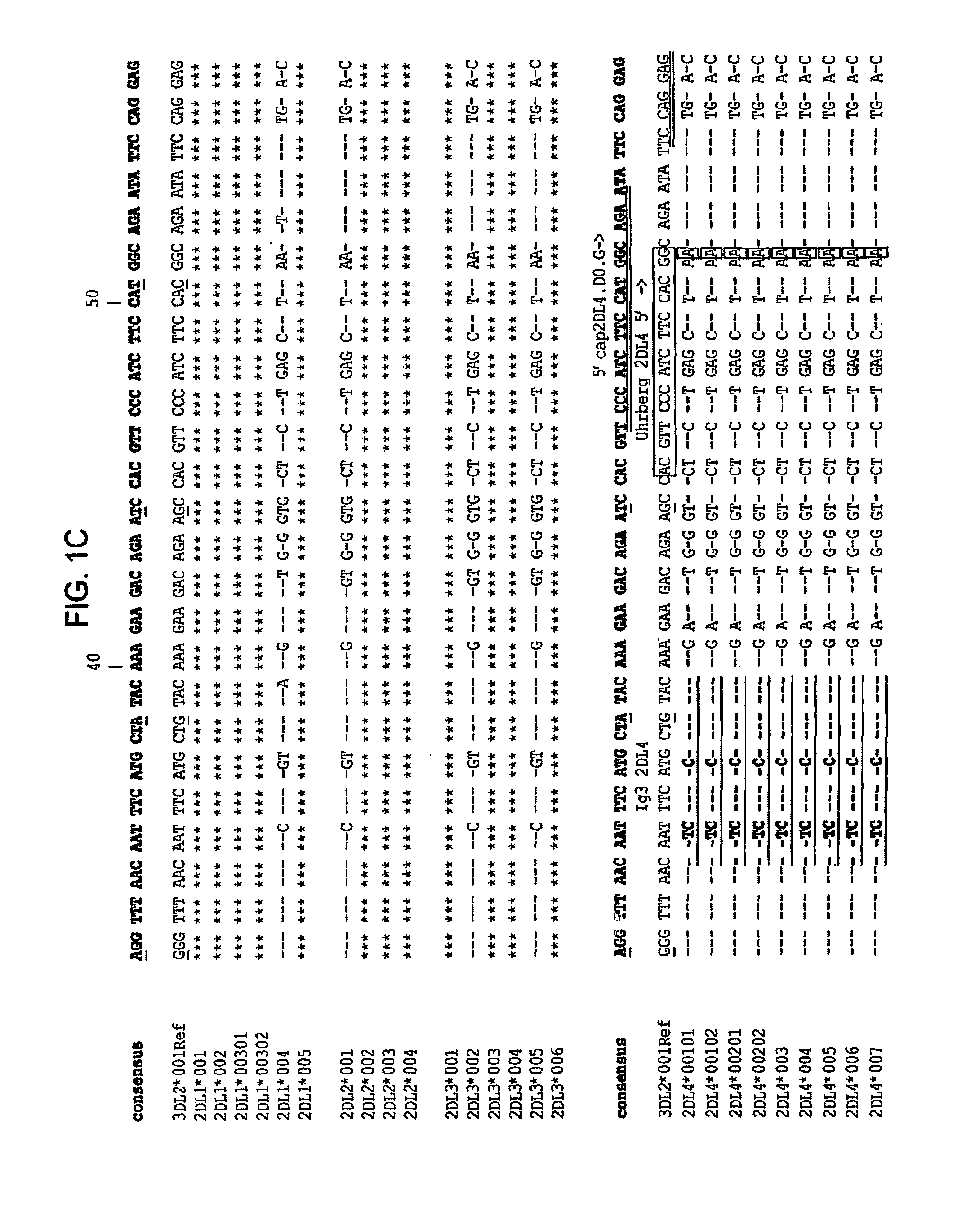Methods and compositions for KIR genotyping
a genotyping and composition technology, applied in the field of methods and compositions for kir genotyping, can solve the problems of large quantity of high-quality dna, time-consuming for machine and technologist, and favorable to high-throughput analysis
- Summary
- Abstract
- Description
- Claims
- Application Information
AI Technical Summary
Benefits of technology
Problems solved by technology
Method used
Image
Examples
example 1
Resolution of KIR Genotypes Using SNPs by MALDI-TOF Mass Spectrometry
[0152]The Sequenom MALDI-TOF system comprises a primer-extension based assay which uses mass spectrometry to measure the exact mass of a genotyping primer that is extended by one or two nucleotides. The Sequenom MASSARRAY™ system includes the matrix-assisted laser desorption / ionization time-of-flight (MALDI-TOF) mass spectrometer (MS) with assorted robotics. This system is designed for speed and accuracy in high-throughput genomics.
[0153]A set of SNPs that distinguish the 17 KIR genes and pseudogenes was identified by in silico inspection of the aligned KIR sequences from the Immuno-Polymorphism Database (IPD) (available on the world wide web at ebi.ac.uk / ipd / kir) (see FIGS. 1-4). The two pseudogenes (2DP1 and 3DP1) were included in the analysis to help identify recombination and to assist with haplotype analysis. Pairs of nucleotide primers were developed to ‘capture’ these SNPs in ˜400 bp PCR amplification produc...
example 2
Concordance Between SNP / MALDI-TOF KIR Gene-Content Typing and Established Methods
[0158]The KIR genotyping assay was designed to have at least two SNPs per locus and to have SNPs in at least two KIR domains whenever possible in an effort to detect novel alleles or loci created by recombination which are known to occur in this complex. The assays were also designed to detect the expected nucleotide in a framework or common locus and the nucleotide specific for the locus queried, to ensure at least one positive signal for most SNP assays and that no calls are based on a “missing” (negative) result.
[0159]To validate the approach, 15 previously characterized IHWG samples from individuals who encompass most of the published variability at the KIR locus (as shown by analysis with established SSOP and / or SSP methods) were tested The set of 38 hME assays proved necessary and sufficient to define the presence or absence of the 15 expressed KIR genes and the two KIR pseudogenes. At this level ...
example 3
Discovery of Novel KIR Alleles by SNP / MALDI-TOF Typing
[0163]Certain KIR allele differences have profound functional consequences. For example common KIR2DS4 alleles are inactivated by a deletion of 18 nucleotides. The present SNP / MALDI-TOF typing system was designed to distinguish the 2DS4 deletion variants from the full-length forms and provided results that were concordant with those obtained by the SSOP and SSP methods (see Tables 10 and 11).
[0164]A more complicated situation is presented by KIR2DL5, for which the gene can variably be found in either the centromeric and telemetric parts of KIR haplotypes or in both regions of the chromosome. Although these genes have been designated as 2DL5B and 2DL5A according to their centromeric or telemetric position, respectively, their sequences show no A-specific or B-specific character and form a single lineage of seven ‘alleles’. Consequently, in order to distinguish the two 2DL5A subtypes from the five 2DL5B subtypes it was necessary to...
PUM
| Property | Measurement | Unit |
|---|---|---|
| mass | aaaaa | aaaaa |
| temperature | aaaaa | aaaaa |
| Tm | aaaaa | aaaaa |
Abstract
Description
Claims
Application Information
 Login to View More
Login to View More - R&D
- Intellectual Property
- Life Sciences
- Materials
- Tech Scout
- Unparalleled Data Quality
- Higher Quality Content
- 60% Fewer Hallucinations
Browse by: Latest US Patents, China's latest patents, Technical Efficacy Thesaurus, Application Domain, Technology Topic, Popular Technical Reports.
© 2025 PatSnap. All rights reserved.Legal|Privacy policy|Modern Slavery Act Transparency Statement|Sitemap|About US| Contact US: help@patsnap.com



